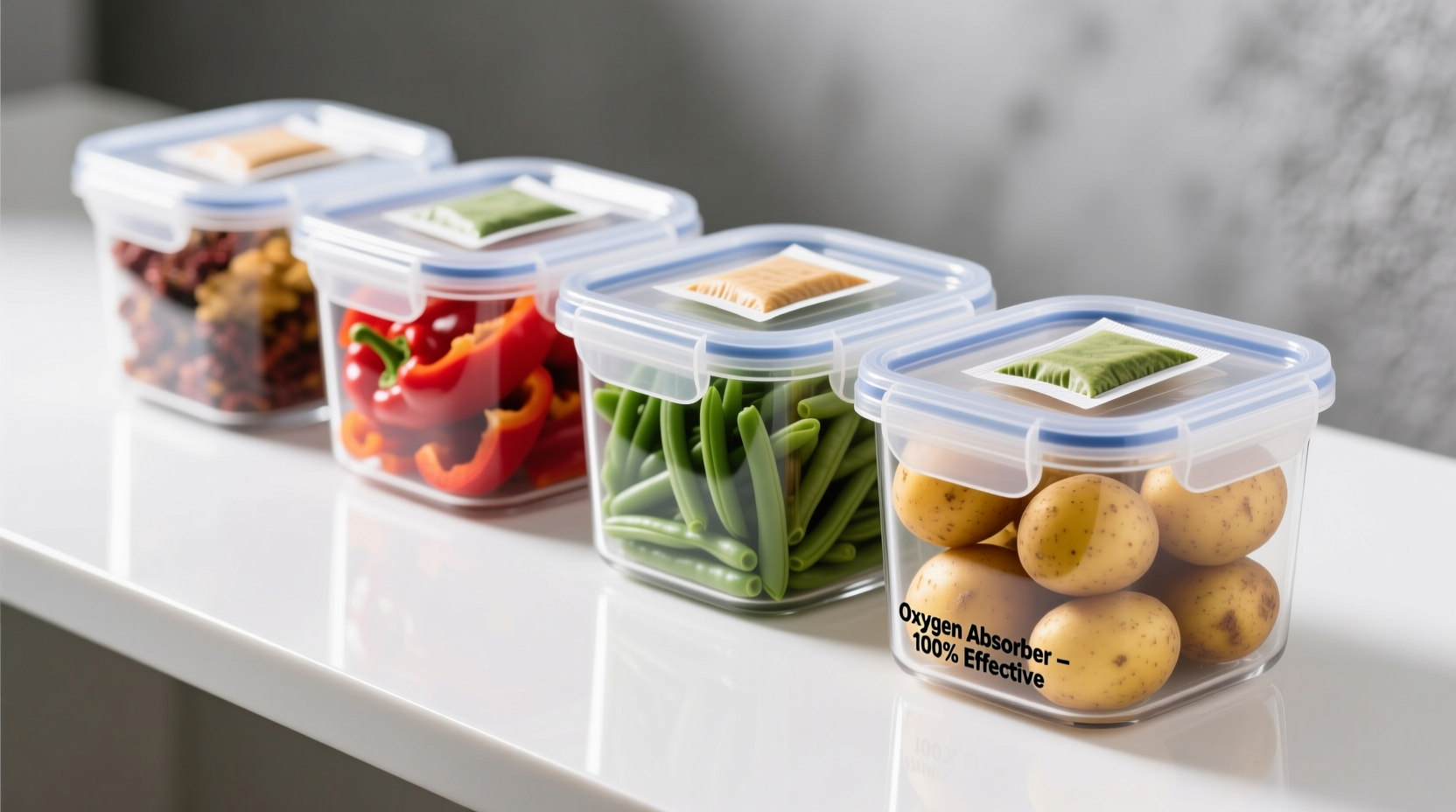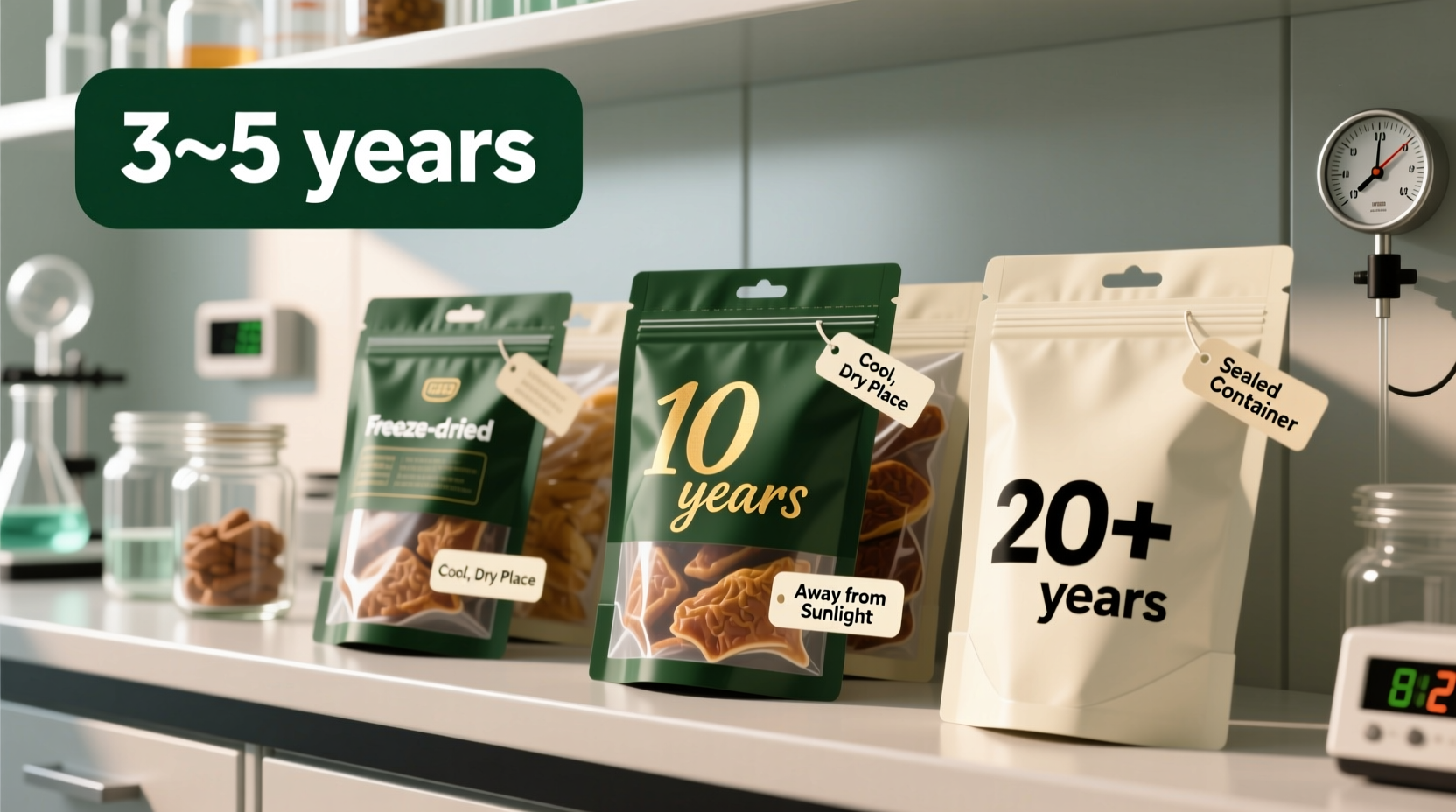Freeze-dried food typically lasts 25-30 years when stored properly in airtight containers with oxygen absorbers at stable temperatures below 70°F (21°C). The actual shelf life varies based on food type, packaging quality, storage conditions, and whether the package has been opened. Unopened commercial freeze-dried meals maintain peak quality for 25-30 years, while home-prepared versions last 10-15 years. Once opened, consume within 6-12 months for best quality.
Discover exactly how long your emergency food supplies will remain safe and nutritious. Whether you're preparing for disasters, planning outdoor adventures, or simply want to reduce food waste, understanding freeze-dried food longevity is essential. This guide delivers science-backed storage timelines, practical preservation techniques, and clear indicators of spoilage - so you can confidently stock your pantry without wasting money on prematurely expired provisions.
The Science Behind Freeze-Dried Food Longevity
Freeze-drying (lyophilization) removes 98-99% of water content through sublimation, creating an environment where bacteria, yeast, and mold cannot grow. Unlike dehydration which uses heat, freeze-drying preserves food structure at low temperatures, maintaining nutritional value and flavor far better than other preservation methods. The U.S. Department of Agriculture confirms that properly freeze-dried foods retain 97% of their original nutritional content when stored correctly (USDA Food Safety and Inspection Service).
| Preservation Method | Water Removal | Typical Shelf Life | Nutrient Retention |
|---|---|---|---|
| Freeze-Drying | 98-99% | 25-30 years | 95-97% |
| Dehydration | 80-95% | 1-5 years | 60-80% |
| Canning | None | 2-5 years | 40-60% |
Realistic Shelf Life Expectations by Food Type
While manufacturers often claim 25-30 year shelf lives, actual longevity depends on specific food characteristics:
- Fruits and vegetables: Maintain quality for 25-30 years when stored properly. Vitamin C degrades faster than other nutrients - expect 70% retention after 25 years.
- Meats and dairy: Last 20-25 years. High-fat content reduces longevity - consider using oxygen absorbers for fatty foods.
- Complete meals: 25 years for grain-based dishes, 20 years for meals containing dairy or fats.
- Home-prepared freeze-dried: Typically 10-15 years due to less optimal packaging and processing.
The National Center for Home Food Preservation notes that "properly packaged freeze-dried foods stored at 60°F will retain quality significantly longer than those stored at 80°F or above" (NCHFP). Temperature fluctuations cause the most damage - a single exposure to 100°F can reduce shelf life by 50%.

Critical Storage Conditions That Determine Longevity
Your storage environment dramatically impacts how long freeze-dried food remains safe and palatable. These factors create context boundaries that determine whether your food reaches its maximum potential shelf life:
- Temperature: Every 18°F (10°C) increase in storage temperature halves shelf life. Ideal range: 50-60°F (10-15°C).
- Moisture: Must remain below 2% moisture content. Humidity above 60% RH accelerates degradation.
- Light exposure: UV rays degrade nutrients - store in opaque containers or dark locations.
- Oxygen: Use oxygen absorbers (300-500cc per gallon) to prevent oxidation and rancidity.
FEMA's emergency preparedness guidelines emphasize that "the single most important factor in extending shelf life is maintaining consistent cool temperatures" (FEMA Ready.gov). Basements often provide better storage conditions than pantries due to more stable temperatures.
How to Detect Spoilage in Freeze-Dried Food
While freeze-dried food rarely becomes unsafe, quality degrades over time. Check for these indicators before consumption:
- Visual changes: Darkening color, especially in fruits and vegetables
- Texture issues: Stickiness or clumping indicates moisture absorption
- Odor changes: Rancid or "off" smells, particularly in high-fat foods
- Taste deterioration: Loss of original flavor or development of stale notes
According to food safety experts at the University of Minnesota Extension, "freeze-dried foods don't typically spoil in the traditional sense, but they do lose nutritional value and flavor over time" (UMN Extension). When in doubt, follow the rule: if it looks, smells, and tastes normal after rehydration, it's safe to eat.
Maximizing Shelf Life: Proven Storage Techniques
Follow these evidence-based methods to achieve maximum longevity from your freeze-dried food supplies:
- Use proper containers: Mylar bags with oxygen absorbers inside food-grade buckets provide optimal protection. Glass jars with oxygen absorbers work well for smaller quantities.
- Monitor storage conditions: Place hygrometers and thermometers in storage areas to track environmental conditions.
- Rotate stock systematically: Implement a "first in, first out" system and use the "best before" dates on commercial products.
- Protect against pests: Store containers off the floor and away from walls to prevent insect and rodent access.
The evolution of freeze-drying technology shows why modern methods outperform older preservation techniques. Originally developed for blood plasma during WWII, commercial food freeze-drying emerged in the 1960s. NASA's space program in the 1970s drove improvements in packaging that doubled shelf life. Today's nitrogen-flushed, multi-layer barrier packaging represents the third major advancement, extending potential storage duration to 30 years (Institute of Food Technologists).
Practical Applications for Different Scenarios
Tailor your freeze-dried food storage strategy to your specific needs:
- Emergency preparedness: Store 3-6 months of food in multiple locations. Check supplies annually and rotate as needed.
- Backpacking and outdoor adventures: Single-serving pouches last 1-2 years once opened - ideal for frequent outdoor use.
- Daily kitchen use: Transfer opened packages to airtight containers and store in the pantry for 6-12 months.
- Long-term investment: For 25+ year storage, consider vacuum-sealed cans with oxygen absorbers stored in climate-controlled environments.











 浙公网安备
33010002000092号
浙公网安备
33010002000092号 浙B2-20120091-4
浙B2-20120091-4